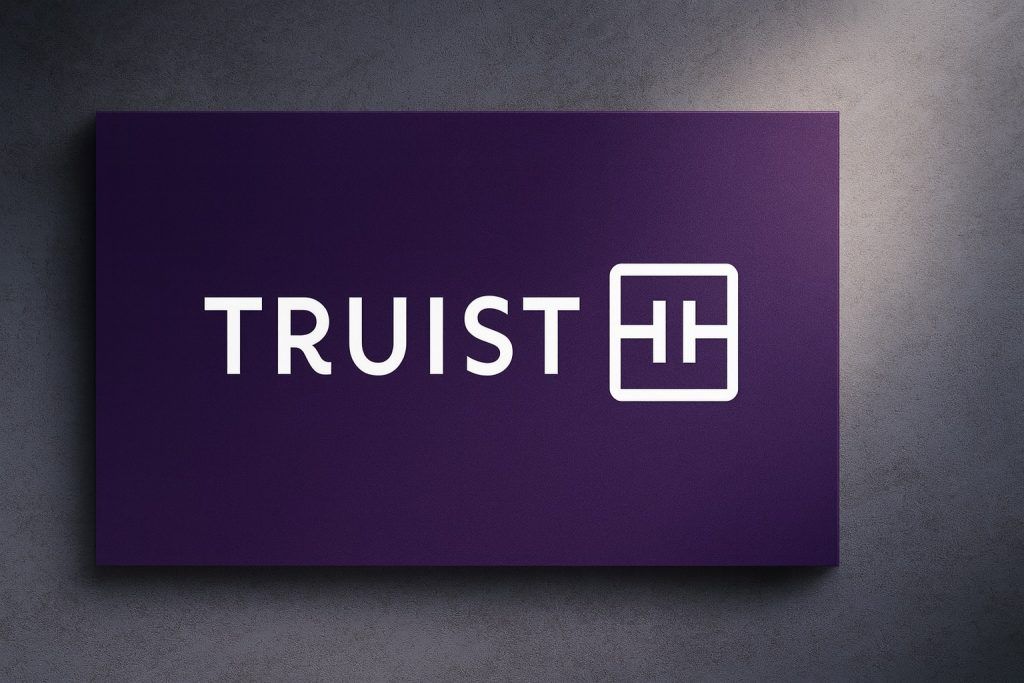- Double-Digit Earnings Growth: Reliance Industries Ltd (RIL) is expected to post robust Q2 FY26 earnings, with consolidated revenue rising ~8–11% year-on-year to around ₹2.52–2.57 lakh crore and net profit climbing roughly 10% YoY to the ₹18,000–21,000 crore range [1] [2]. Analysts attribute the growth to improved refining margins in the oil-to-chemicals (O2C) business and sustained expansion in its telecom (Jio) and retail arms [3].
- Sequential Comparison: Profit is likely lower than the record ₹26,994 crore PAT RIL posted last quarter (Q1 FY26) – which had a one-time gain from asset sales – but still marks a healthy annual increase [4] [5]. For context, Q1 FY26 saw RIL’s highest-ever quarterly profit (₹26,994 crore, +78% YoY) driven by one-off investment gains and booming consumer businesses [6]. Excluding that one-time boost, Q2’s expected profit indicates RIL’s core earnings remain on solid footing.
- Stock Recovers After Post-Q1 Slide: RIL’s stock fell ~6% after the previous quarter’s results (erasing ₹1.8 lakh crore in market cap) amid concerns about soaring capex and cash flows [7]. However, shares have rebounded in recent weeks – up ~4% in October – and even gained ~1.5% to close at ₹1,419 ahead of the Q2 results announcement [8] [9]. Year-to-date, the stock is about 13% higher, and analysts say a decisive break above ₹1,420–1,450 could trigger a rally toward ₹1,550, given strong technical support [10] [11].
- Segment Highlights: RIL’s O2C division is expected to shine on higher refinery throughput and better fuel margins – JPMorgan estimates ~26% YoY EBITDA growth in refining [12]. The digital telecom arm (Jio) likely saw net profit up ~5% QoQ (to ~₹7,000+ crore) on a subscriber base now above 500 million, aided by 7 million new users and ARPU nudging up to ~₹211 [13] [14]. Reliance Retail is forecast to report ~17% YoY revenue growth (to ~₹89,000 crore) with ~13% EBITDA growth [15], though margins may compress slightly on a high base. Upstream oil & gas will be subdued (natural decline at KG-D6 gas fields) [16], but new energy projects are on the horizon.
- Investor Buzz – Jio IPO & New Energy: Beyond the numbers, investors are keenly watching management commentary on strategic moves. Updates on a potential Reliance Jio IPO are highly anticipated – Bloomberg reported RIL may float ~5% of Jio for $6–7 billion, indicating Mukesh Ambani’s intent to unlock value in its telecom arm [17]. RIL’s push into “Powering AI” – spanning data centers and partnerships with Meta, Google, and NVIDIA – and its ₹75,000 crore New Energy investments could be “long-term re-rating triggers” for the stock, according to Morgan Stanley and HSBC [18]. Analysts say any guidance on these initiatives (e.g. progress in solar gigafactories, AI cloud infrastructure, or the upcoming Jio Financial Services spin-off) may boost market confidence in RIL’s plan to “double by 2027” – a goal Ambani touted at the AGM [19].
- Outlook – Expert Calls: Most brokerages maintain a Buy/Overweight on RIL, with target prices in the ₹1,700–1,780 range [20] – about 20% upside. They cite RIL’s diversified earnings engines (energy, telecom, retail) and improving consumer business mix [21]. “Reliance is well-positioned to test fresh all-time highs over the coming year,” says Anshul Jain of Lakshmishree Investment, noting the stock’s consolidation phase may be ending [22]. Technical analysts highlight ₹1,380 as a strong support and ₹1,500 as resistance [23]. With Q2 results expected to show steady growth and the broader market rebounding, many experts see RIL’s current levels as an attractive entry point – as long as execution on big-ticket projects (5G rollout, retail expansion, green energy) stays on track [24] [25].
RIL Q2 Earnings Signal Steady Growth Across Businesses
Mumbai, Oct 17, 2025 (News Report): Reliance Industries – India’s largest company by market value – announced its July–September quarter results on Friday, delivering a solid performance amid high investor expectations. Early indications from brokerage estimates suggest double-digit growth in both profit and revenue for Q2 FY2026, driven by strength in RIL’s core businesses. Analysts had widely predicted a “healthy double-digit rise in consolidated revenue and profit” year-on-year [26], and RIL appears to have largely met those optimistic forecasts. This comes after an extraordinary Q1 where Reliance booked record profits thanks to a one-off gain. While Q2’s profit is naturally lower sequentially (given that one-time boost last quarter), the underlying business momentum remains positive, assuaging some investor concerns.
Oil-to-Chemicals (O2C) Backbone: RIL’s legacy O2C division – spanning refining and petrochemicals – has staged a modest comeback. The company benefited from firm refining margins (helped by strong diesel and jet fuel spreads, plus a weaker rupee aiding export realizations) [27]. Axis Capital and UBS estimate Reliance’s refining EBITDA jumped over 20% YoY on better gross refining margins (~$9.5 per barrel this quarter vs ~$9.4 in Q1) [28] [29]. Throughput also rose (~17.3 MMT, up 6% QoQ) as the Jamnagar refinery ran at higher capacity after maintenance shutdowns in Q1 [30]. However, petrochemical margins stayed tepid amid global oversupply, slightly tempering O2C’s gains [31]. Still, stronger fuel cracks and retail fuel marketing margins more than offset the weakness. Net-net, O2C likely powered a significant part of Reliance’s profit growth this quarter, marking a contrast to last year when weak refining margins had dragged earnings.
Consumer Businesses Firing: Reliance’s twin growth engines – Digital Services (Jio) and Retail – continued their steady march upward. Reliance Jio, the telecom arm, is estimated to post ~₹31,800 crore in revenue for Q2 with EBITDA up ~15% YoY [32] [33]. Subscriber additions remain robust: Jio reportedly added ~7 million mobile users during the quarter, taking its total base to about 502 million – cementing its status as India’s #1 telco [34] [35]. Importantly, Jio’s average revenue per user (ARPU) ticked up to ~₹211 from ₹209 last quarter [36], helped by higher data usage and an extra day in the quarter. This combination of subscriber growth and marginal ARPU improvement lifted Jio’s net profit by an estimated 5–6% sequentially [37] (and around 10–14% year-on-year). Analysts see Jio’s growth as “steady, not spectacular” – the real fireworks could come if/when tariff hikes are implemented or a Jio IPO unlocks value.
On the Retail front, Reliance Retail is expected to report ~₹89,000 crore in Q2 revenues – about 17% higher YoY [38] – reflecting new store openings and resilient consumer demand in categories like groceries, electronics and fashion. However, there’s a note of caution: retail EBITDA margins likely slipped slightly (by ~0.2 percentage points) to ~7.2% [39], as consumer spending normalized after a post-pandemic boom. Even so, retail EBITDA probably grew ~13% YoY (~₹6,400 crore) [40]. Notably, analysts at UBS and Axis Capital pointed out that grocery and apparel sales are leading the gains [41], and they expect high-teens EBITDA growth to sustain as efficiencies improve. In sum, Reliance’s consumer businesses – Jio and Retail – remain on a strong growth trajectory, contributing nearly half of consolidated EBITDA, which balances out the cyclicality of the O2C segment.
Post-Q1 Blues Fading: This quarter’s results carry extra significance because RIL’s stock had slumped after the previous earnings. When Reliance announced its blockbuster Q1 FY26 profit (boosted by a ₹8,900 crore gain from selling its stake in Asian Paints) [42], the market reaction was paradoxically negative. Despite the headline numbers, investors grew wary of ballooning capital expenditure and subdued free cash flow, as RIL plows money into new energy projects, 5G expansion, and retail acquisitions. In the weeks following Q1, RIL’s share price slid about 6%, wiping out roughly ₹1.8 lakh crore (~$22 billion) in investor wealth [43]. Some analysts also flagged the flattening of Jio’s ARPU and margin pressures in retail as red flags, contributing to the cautious sentiment.
However, as Q2 approached, much of that pessimism has abated. RIL’s stock has recovered from ~₹1,330 in August to around ₹1,415 this week. In fact, RIL was up about 4.4% in October as of results day [44], outpacing the Nifty index, aided by a broader market rally and anticipation of improved earnings. On Friday (Oct 17) ahead of the results, Reliance shares closed 1.35% higher at ₹1,416.95 on the BSE [45]. Market experts say this reflects renewed confidence that RIL’s fundamentals are back on track. “The stock’s consolidation after Q1 now looks complete. Dips were bought up by investors, which is a healthy sign,” noted one trading desk report. Indeed, derivatives data indicated bullish positioning – there was significant unwinding of ₹1,400 strike call options (bets that the stock won’t rise past ₹1,400 were being closed out), suggesting traders expect an upward move [46]. According to Axis Securities, sentiment has flipped “Bullish” in the options market, with strong support at ₹1,380 and resistance around ₹1,500 [47].
Key Focus Areas – Jio IPO & New Energy: In RIL’s earnings commentary, investors are eyeing more than just the numbers. The conglomerate is in the midst of transformative initiatives that could define its future – and possibly its market valuation – in coming years. Topping that list is the potential Reliance Jio IPO. RIL’s chairman Mukesh Ambani has been hinting at listing the telecom-digital unit to unlock value. This quarter, speculation intensified after a Bloomberg report that Reliance may go for a “scaled-down” IPO of Jio Platforms, potentially selling about 5% stake for $6–7 billion [48]. While RIL hasn’t confirmed a timeline, any management comments on Jio’s listing plans or strategic investors will be closely parsed. A Jio IPO would not only monetize a slice of RIL’s fastest-growing business but also test investor appetite for India’s telecom and tech sector. Recall that Jio Platforms raised over $20 billion in 2020 from marquee investors (Facebook, Google, etc.), and a public listing could mark the next step in that value-unlocking journey. “Even a small stake sale via IPO can help price discovery for Jio – potentially valuing it in excess of $100 billion – and that upside isn’t fully baked into RIL’s stock yet,” noted an analyst on ETNow.
Another area of interest is RIL’s aggressive push into clean energy and technology. At the company’s AGM in August, Ambani outlined an ambitious vision to transform Reliance into a “deep-tech and green energy” powerhouse, aiming to double the company’s value by 2027 [49]. Investors will be listening for progress updates on the ₹75,000 crore New Energy division – which spans solar panel gigafactories, advanced battery projects, green hydrogen, and more. There are tangible developments: RIL recently operationalized its first 1 GW solar module line (HJT technology) and is scaling up to 10 GW by early 2026 [50]. Brokerages like Nuvama are bullish that RIL’s solar manufacturing and renewable push could “trigger a valuation re-rating similar to the Jio launch in 2017,” potentially adding 50% to RIL’s PAT by 2030 [51]. While these projects won’t reflect much in this quarter’s earnings, any positive commentary – say, on timelines for the 30 GWh battery factory or new partnerships (RIL is working with firms like Meta and Nvidia on AI infrastructure) – could boost sentiment. Morgan Stanley and HSBC analysts noted that updates on Reliance’s emerging “Powering AI” ecosystem (data centers, AI compute, etc.) “could serve as a long-term re-rating trigger” for the stock by positioning RIL at the forefront of digital infrastructure [52]. In short, RIL’s narrative is increasingly about future growth frontiers (5G, AI, renewables) as much as it is about current profits from oil and telecom.
Cash Flow & Debt Watch: A more immediate concern for investors is cash flow and debt levels. RIL has been in a heavy investment phase – from 5G spectrum and network rollout (Jio has now activated 10 live 5G network slices nationwide and crossed 200 million 5G users) [53], to retail expansion (thousands of new stores across India), to funding its new energy giga-plans. This capex cycle has put pressure on free cash flow; meanwhile, the company’s net debt crept up in recent quarters after being net-debt free in 2020. In Q2, analysts were looking for signs that core operations are generating enough cash to comfortably fund these ventures. Any improvement in operating cash flow or moderation in capex intensity would be taken positively. Additionally, RIL’s recent demerger of its financial services arm (Jio Financial Services) may come up – though spun off in August, JFS’s value unlocking (market cap near ₹1.5 lakh crore on listing) provides RIL with a financial war chest for growth initiatives, as it retained a large stake. The bottom line: investors want reassurance that RIL can execute its mega-projects without stretching its balance sheet. So far, the company has balanced borrowing and asset monetizations (like the stake sales in Jio and retail in 2020) to keep leverage in check. The Q2 earnings call might offer color on whether further stake sales (perhaps in retail or infrastructure InvITs) are on the horizon to fund green energy expansion.
Market Reaction & Stock Outlook: With earnings largely in line with expectations, market attention is shifting to what’s next for Reliance’s stock. Having lagged for much of 2024, RIL shares have rallied ~25% in 2025 so far [54] [55], and many analysts believe this momentum can continue. A survey of brokerage views finds near-unanimous optimism: UBS, Axis Capital, Kotak, HSBC, and Morgan Stanley all have “Buy/Overweight” ratings, with price targets from ₹1,700 up to ₹1,780 [56]. That implies roughly 20–25% upside from current levels. These firms argue that RIL’s earnings mix is steadily improving – higher contributions from consumer/tech sectors (Jio + Retail) and forthcoming new energy revenues – which should eventually command a richer valuation multiple. They also note that key overhangs are easing: for instance, telecom tariff hikes, if implemented in 2026, could significantly boost Jio’s ARPU; and retail’s profitability is expected to improve as initial investments in new stores and e-commerce begin to pay off.
Technical analysts are similarly constructive. After months of trading in a range, RIL is flirting with a breakout. “Reliance has been stuck between ₹1,320 and ₹1,420 for over 50 sessions – a squeeze that usually precedes a big move,” observed Anshul Jain, Head of Research at Lakshmishree Broking [57]. He notes that a close above ₹1,420 (which coincidentally happened on results eve) would confirm bullish momentum, potentially opening the rally toward the ₹1,500–₹1,550 zone in coming weeks [58]. On the downside, strong support near ₹1,320 has held repeatedly [59], giving traders confidence that dips are limited. Options data, as mentioned, imply only a ±3% near-term swing [60] – suggesting that unless there’s a major surprise in guidance, the stock may not see wild volatility post-results. Some short-term traders are employing strategies like straddles to play for a modest move either way [61], but long-term investors seem to be positioning for an upward trajectory, given the plethora of catalysts on the horizon.
Expert Quotes: “Reliance’s Q2 was all about steadiness – not a blowout, but solid across the board. That’s exactly what the street needed to see after last quarter’s noise,” said Saurabh Jain, head of research at SMC Global [62]. He highlighted that telecom and O2C delivered “healthy contributions”, while retail growth, though a tad slower, remains fundamentally strong [63]. Jain adds that RIL’s core strengths – scale, diversification, and an appetite for innovation – make it uniquely positioned among Indian corporates to capitalize on emerging trends. “From 5G to green hydrogen to AI computing, Reliance is planting seeds that could be huge in 5-10 years. The market is starting to appreciate that future-forward story, not just the quarterly earnings,” he said. Another analyst, JPMorgan’s Vivek Modi, noted that higher depreciation and interest costs (from new projects) mean profit growth (projected ~12% YoY) might lag EBITDA growth (~14% YoY) [64]. “But that’s a trade-off for growth – as long as return on capital improves over time, investors will allow some short-term hit to earnings,” Modi explained.
Furthermore, market strategist Avinash Gorakhnath pointed out the significance of Reliance’s underperformance last year. “RIL was a drag in 2024, but in 2025 it’s been a market leader with 25% gains [65]. A lot of folks missed that rally. Now with results confirming the turnaround, we could see fresh buying interest,” he said on a TV panel. Gorakhnath believes the stock could approach ₹1,600 in the next couple of quarters, especially if global oil prices remain supportive (bolstering O2C earnings) and if there’s concrete news on the Jio or retail IPO front.
Conclusion: Reliance Industries’ Q2 FY26 performance and commentary suggest India’s most valuable company is back in growth mode. The slight stumbles of the past year – whether due to margin pressures or investor apprehensions – seem firmly in the rear-view mirror as RIL executes on its plans. With earnings on an upswing and multiple strategic catalysts looming, the consensus is that Reliance could be at the cusp of a new uptrend. Of course, execution risks remain: global economic uncertainties could impact energy demand, tech disruptions could alter the competitive landscape, and large projects don’t always pan out as expected. Yet, if history is any guide, betting against Mukesh Ambani’s grand plans has rarely been wise. As Reliance enters the second half of its fiscal year, all eyes will be on how effectively it balances current profitability with its “golden decade” growth ambitions. So far, in Q2, it appears to be walking that tightrope rather well – a fact not lost on the market or its millions of shareholders.
Sources: LiveMint [66] [67]; Economic Times [68] [69]; Moneycontrol [70] [71]; Upstox [72] [73]; TS² (TechStock²) [74] [75].
References
1. upstox.com, 2. www.moneycontrol.com, 3. upstox.com, 4. www.livemint.com, 5. upstox.com, 6. www.livemint.com, 7. economictimes.indiatimes.com, 8. www.livemint.com, 9. www.livemint.com, 10. www.livemint.com, 11. upstox.com, 12. www.moneycontrol.com, 13. www.livemint.com, 14. ts2.tech, 15. www.livemint.com, 16. www.livemint.com, 17. ts2.tech, 18. www.moneycontrol.com, 19. www.livemint.com, 20. www.moneycontrol.com, 21. www.moneycontrol.com, 22. www.livemint.com, 23. www.livemint.com, 24. www.moneycontrol.com, 25. economictimes.indiatimes.com, 26. www.livemint.com, 27. www.moneycontrol.com, 28. www.livemint.com, 29. www.moneycontrol.com, 30. www.livemint.com, 31. www.livemint.com, 32. www.moneycontrol.com, 33. www.moneycontrol.com, 34. www.livemint.com, 35. www.livemint.com, 36. www.livemint.com, 37. www.livemint.com, 38. www.livemint.com, 39. www.livemint.com, 40. www.livemint.com, 41. www.moneycontrol.com, 42. www.moneycontrol.com, 43. economictimes.indiatimes.com, 44. www.livemint.com, 45. www.livemint.com, 46. www.livemint.com, 47. www.livemint.com, 48. ts2.tech, 49. www.livemint.com, 50. economictimes.indiatimes.com, 51. economictimes.indiatimes.com, 52. www.moneycontrol.com, 53. ts2.tech, 54. economictimes.indiatimes.com, 55. economictimes.indiatimes.com, 56. www.moneycontrol.com, 57. www.livemint.com, 58. www.livemint.com, 59. upstox.com, 60. upstox.com, 61. upstox.com, 62. www.livemint.com, 63. www.livemint.com, 64. www.moneycontrol.com, 65. economictimes.indiatimes.com, 66. www.livemint.com, 67. www.livemint.com, 68. economictimes.indiatimes.com, 69. www.moneycontrol.com, 70. www.moneycontrol.com, 71. www.moneycontrol.com, 72. upstox.com, 73. upstox.com, 74. ts2.tech, 75. ts2.tech







